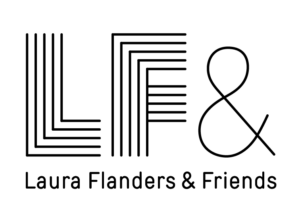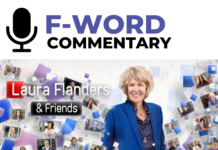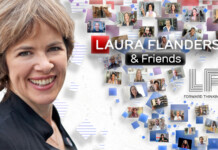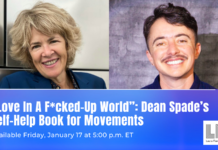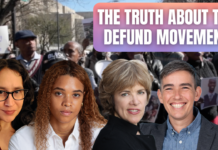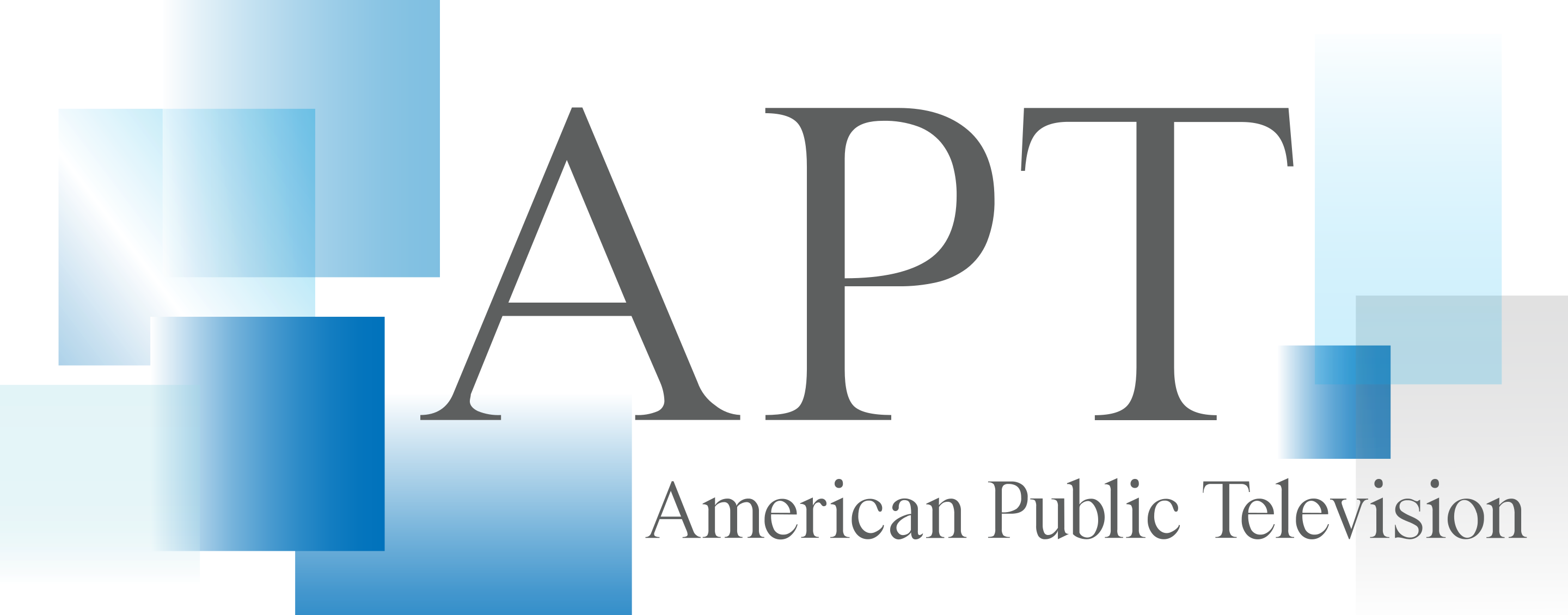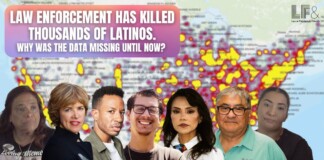On Indigenous Peoples Day, Laura reports from “He Sapa‘’, the sacred Black Hills of South Dakota where NDN Collective is reclaiming ancestral lands to address homelessness, addiction and violence against Native Americans. Catalyzed in 2020, by an action in which Land Defenders blocked former President Donald Trump’s road to Mount Rushmore, this Landback campaign is about reclaiming, along with stolen land, native ceremonies, spirituality and traditions of community care. In this special feature, Laura reports on Camp MniLuzahan, a tipi village built on tribal trust land that welcomed hundreds of unhoused Indigenous people and others in the Rapid City area in the dead of winter last year. Among Laura’s guests, Oglala Lakota activists Nick Tilsen, Krystal Two Bulls and Sunny Red Bear of NDN Collective.
“ is… a teaching moment what could happen. We’re envisioning what could be if we actually had control of our lands and what it would mean to have land back.”
Sunny Red Bear, Director of Racial Equity, NDN Collective; Lakota from the Cheyenne River Sioux Reservation
Guests:
- Hermus Bettelyoun, Racial Equity Organizer, NDN Collective; Oglala Lakota
- Sunny Red Bear, Director of Racial Equity, NDN Collective; Lakota
- Amy Sazue, Education Equity Organizer, NDN Collective; Sicangu & Oglala Lakota
- Nick Tilsen, President & CEO, NDN Collective; Oglala Lakota
- Krystal Two Bulls, Director of LANDBACK Campaign, NDN Collective; Northern Cheyenne/Oglala Lakota
To listen to the uncut interviews, and to get episode notes for this episode and more, become a Patreon partner here.
Live Talk-Back
Guests Amy Sazue, Nick Tilsen, Krystal Two Bulls and Sunny Red Bear of NDN Collective spoke with Laura Flanders about #LANDBACK as a better model to care for people and the land. How can non-indigenous people support the land back movement? “Check your own white fragility,” says Tilsen. That work extends far beyond one day of recognition.
Be sure to join us on YouTube for a live viewing event and chat with Laura and guests Sundays, starting at 11:30am ET.
Prefer to Listen?
Transcript
THE LAURA FLANDERS SHOW
LANDBACK: A TIPI VILLAGE TAKES ON HEALING & HOMELESSNESS
LAURA FLANDERS: In 1980, the U.S Supreme Court ruled that the land behind me on which Mount Rushmore is carved, had been stolen from the Sioux People in violation of an 1870s treaty. And in 1980, the court awarded the Sioux $2 million in compensation. But the Sioux didn’t want that money, they want the land. And they want it still, and not just to own it, but to operate it and look after it in an entirely different way. I’m in South Dakota, in the Black Hills with the people of the NDN Collective, looking at their work around this campaign, they call LANDBACK. The campaign launched on Indigenous Peoples’ Day 2020, a year ago almost to the day. Just a few months before in the midst of nationwide demonstrations against police brutality and anti-Black racism, members of the NDN Collective and hundreds of other Indigenous land defenders had rallied to stop President Trump from giving his 4th of July address from their ancestral homelands. But how did a demand that First Nations and Indigenous People have long been making become a new campaign to radically transform communities, society and more. At the NDN office in Rapid, I spoke with LANDBACK campaign director, Krystal Two Bulls and president and CEO, Nick Tilsen, to learn more.
KRYSTAL TWO BULLS: In one year, what we’ve been able to accomplish feels like, it feels like we’ve been organizing this campaign for like five years. We were obviously catalyzed on July 3rd when we did the action and where, you know, Nick Tilsen and myself and another of our organizers with other land defenders were arrested. And that action itself was catalyzed as well by the Movement for Black Lives in the organizing that they had done around the murder of George Floyd in tearing down colonial statues that continue to uphold white supremacy and the narrative of white supremacy in this country.
NICK TILSEN: For us, sitting here in the Black Hills watching this happen and Trump was coming here, I thought about what could we do? What could we do as Lakotas, as Indigenous People to stand in solidarity with the Black liberation movement in the moment of a racial uprising, but stand in our own power, with our own identities and who we are, but contribute to that narrative. But at the same time make sure that the struggle for Indigenous People, Indigenous lands and our future isn’t erased in the process. And I was like, this is perfect. Because the Mount Rushmore is not something, it’s not a statue that you can topple. It’s not a flag that you can lower. It’s not a painting that you can take off the wall. The only way to achieve justice in this situation is return the land.
KRYSTAL TWO BULLS: From that moment, the hashtag, you know, which originated from our relatives up north, in so-called Canada and artists from up there, it just took off here in the so-called U.S. And so from that moment, we’ve just been running, pretty much sprinting a marathon race, but, you know, we had our official launch on Indigenous People’s Day, and we were really intentional about that day being a day for us to really ground almost every Indigenous struggle in LANDBACK and really pushing forth the meta-narrative of LANDBACK as the ultimate connector, right, and the ultimate umbrella of organizing. Pretty much anything that Indigenous Peoples are organizing towards, and fighting for can fall up underneath the banner of LANDBACK. First and foremost, LANDBACK is literal reclamation of land, right? Like it is literally, we want access to our lands. We want to be able to embody our original instructions to be the caretakers of this land. That’s not in a colonial context in terms of the way, you know, people think about ownership of the land. For us, that’s not the context, right? Like it’s more about returning to the land because the way that we’re taught in our ceremonies and our teachings tell us is that, we are the land and we belong to the land, not the other way around. And LANDBACK is also the reclamation of everything stolen from us, when we were forcefully removed from the land. And that includes our ceremonies. That includes our languages. That includes our way of life, our culture, our spirituality. We had all of that pre-colonization.
NICK TILSEN: We absolutely wanna meet the needs of our people. Our people need housing. Our people need a better education system, our people need jobs, our people need childcare centers. Our people need all the things that people need in society today to meet their needs. We wanna make sure that we create community development strategies to help accomplish that. Right? And that’s some of the work that we’re engaged in now. It’s where we’re reclaiming different lands, here, right in the Black Hills, right here in Rapid City. Some of ’em we’re buying, some of ’em we’re getting gifted. Some of ’em we’re being negotiated. Some of ’em the city are having to give up or return them. And we’re utilizing those lands to engage, what does that future look like? Because for so often, you know, many of our people haven’t been asked the question, “What is it that you want for your future? What kind of community do you wanna live in?”
LAURA FLANDERS: Like, just about every city in the United States, Rapid City in South Dakota in the county of Pennington has a big problem with poverty, homelessness, addiction and abuse.
STEVE ALLENDER: The homeless population is growing. There’s been an influx from the local Indian reservations, many who are here, many new homeless members who are here are attracted by the free food and parks. There are several groups now feeding homeless members in city parks and about town and that is a big attraction. We know this because this is what they tell us. Many of this group are also attracted by the availability of alcohol.
LAURA FLANDERS: They’ve spent millions of dollars trying to address that problem too. But in the winter of 2020, the movement organization NDN Collective arguably accomplished more. When they brought dozens of their relatives from downtown, up here into the hills, to a camp, a tipi camp called Camp MniLuzahan.
REPORTER: Since mid-October, Camp MniLuzahan has provided shelter and community to those in need. Today, they allowed the media in for the first time, giving details about day-to-day life in the camp and insight for the future. There are between 12 and 20 volunteers a day, and any number of people using their services, which makes the camp into a mini community with multiple tents, a mess hall, and even a communal fire. One of the main volunteers said their goal is to protect relatives.
LAURA FLANDERS: I spoke to two of the members of NDN Collective about what happened here.
SUNNY RED BEAR: We have a history of our people living along the Rapid Creek. The Rapid Creek is where Rapid City got its name from. And many of our relatives gravitate towards that, right? Like water’s life. It has energy, you know. There’s safety in it. And so, a lot of our unhoused relatives stay along that creek.
HERMUS BETTELYOUN: Our Creek Patrol started last summer initially to check and make sure the welfare and safe being of our people, our relatives down on the creek, here in Rapid City. Offering supplies, such as hygiene, blankets, food every now and then, a hot meal, taking it out to them and just making sure their overall safety is okay.
SUNNY RED BEAR: There’s a lot of gaps in services wherever you are, in whatever city you reside in. And so Creek Patrol was kind of a call to action as you will, by a group of individuals that just saw that need and that went out there and just did the work. They started over a year ago now. And I came into Creek Patrol about three months later. There’s a lot of harassment along that Creek. When people know that these people are vulnerable and then also know that there’s no repercussions or consequences to actually inflicting harm or violence on the unhoused.
HERMUS BETTELYOUN: The police department is supposed to protect and to serve all our people. But the thing is, the police department here in Rapid City, they criminalize and abuse these relatives.
LAURA FLANDERS: What was the relationship between the work of the Creek Patrol, working with the unhoused relatives down along the creek and the creation of Camp MniLuzahan that followed?
HERMUS BETTELYOUN: It was starting to get cold last year, about this time. We needed someplace for them to go. We asked the city if we can find a place to rent, a vacant building, we reached out to the mayor. They left us with no options. And so we decided, well, we’re gonna set up tipis here, in a central area where they can just walk over and, you know, have a warm place. The city and the police department surrounded us with, I think, half the police force, if not the whole police force and a SWAT team and some highway patrol. They surrounded us and arrested us for trying to protect our relatives. When we got out of jail and we were shown this place and we came over the hill and it was meant to be. That spot was just, is really awesome. It was really a great feeling getting that. So we went down and got the tipis and gathered a lot of people from the city, a lot of community members went up with us and helped us clear spots and set up the tipis. And we lit the fire. We lit a community fire in the center of camp. And that fire burned from the time camp was set until we closed down.
REPORTER: The camp, located on land owned by the Oglala Sioux, Rosebud Sioux and Cheyenne River Sioux tribes has multiple sleeping tents and tipis. A cook shack, a mess hall with movie night capabilities and communal fires. The camp has received numerous donations, including food, money and everything in between.
LAURA FLANDERS: What do you think Camp MniLuzahan was able to provide that Rapid City services hadn’t? Many of the people you were housing at the camp were struggling with different sorts of addictions.
SUNNY RED BEAR: I think the biggest thing is that we saw them as relatives, that we saw them as humans. They weren’t just a number, that we weren’t getting funding for them, but that it provided a safe space for them to be.
HERMUS BETTELYOUN: On a nightly basis, there was anywhere from 75 to 100 people utilizing the camp. As they started seeing that these lands are our homelands, this land belongs to them. And by the tribes allowing us to open up the camp on Lakota territory, in our Black Hills, it sparked a little fire. And so slowly, we started getting, you know, four or five people being sober for a week. And then pretty soon it started growing all the way into April. We had, I’m guessing a little more than 50% of them were sober.
SUNNY RED BEAR: We didn’t have training. We didn’t go into like Camp MniLuzahan training and like learn how to take care of each other. It was like this inherent knowledge that we carried with us. And I think that what that allowed us to do is like for one, connect to the land, which I felt was very, very important, but also it created this system of accountability and relying on each other and finding purpose within camp. And, just being in the land, being away from things that are distracting us from really, truly connecting to each other.
HERMUS BETTELYOUN: Our people can work with our people because we understand, we lived the trauma on a day-to-day basis. We live and deal with the racism and the systematic oppression that this government has put on our people. And so it’s easier for us to connect than it is for somebody who has never lived with the trauma that we grew up with.
SUNNY RED BEAR: Because of colonization, because of assimilation, so many of our unhoused relatives are actually those that are victims of boarding schools or the grandchildren of boarding school survivors. And there was a boarding school in Rapid City that was really right directly near where Camp MniLuzahan existed. And really when we talk about the creek, our relatives used to make camp along that creek because they wanted to be close to their children in the boarding schools.
LAURA FLANDERS: The trauma of the not so distant past runs into the present along the banks of Rapid Creek, but healing is possible. And for the members of NDN Collective that process isn’t just about reclaiming land, but also history. To learn more about the Rapid City Indian Boarding School, I met with Amy Sazue up at Camp MniLuzahan. She’s Education Equity Organizer at NDN Collective.
AMY SAZUE: So we call ourselves, our informal name is the Rapid City Indian Boarding School Lands Team. So our team did actually go down to the National Archives and look into, just looking for more information about the school, about children that might’ve died, and then what happened to them. So in that process, we found over 50 kids that died at the Rapid City Indian Boarding School. And we knew just some stories in our communities that a lot of these kids’ families were looking for them. And so, identified the names, kind of got that part of the project going. But in the meantime, we opened up this whole big issue about the land. So from Bacon Park in Rapid City all the way to Canyon Lake, was all land that belonged to the school. And the reason they had so much land is because the kids went to school for a very minimal time in the morning and then worked. That was the point of the boarding school system was to strip away identity, culture, anything having to do with being Lakota and get people who are ready to join the workforce. And so that’s what they were doing with these kids. And so this land, when the boarding school closed, Rapid City leadership went to the Department of Interior. The Department of Interior issued a statute that said that the land could be used in three different ways. So the first was that it could be given for free to schools, the national guard, parks and needy Indians could get it for free. West middle school, the school district got parts of it. Churches bought a ton of it. The interesting part of this story is that needy Indians got zero. So the lands project is really focusing right now on reconciliation of those three land parcels and getting the children’s Memorial established and preserving that site on the side of the hill, where we found evidence of graves. We wanna build a Memorial there so that we can come pray there and remember the kids. We’ll also protect that land and make sure there’s no development. It’s not being dug up and people aren’t driving ATVs on it anymore, or walking their dogs on top of the graves of children who died. I can’t think of any other instances where all three tribes own land together and also were able to come together in agreement on something that is happening off of tribal land or off the reservation. What’s really beautiful about that is it doesn’t just mean the Oglala Sioux tribe, Rosebud Sioux tribe, and Cheyenne River Sioux tribe, it includes all of our Dakota, Nakota relatives across the state. And this place in camp was super diverse. And it was mostly the local tribes, the closest ones, but it was super diverse. And it’s just creating a space for that, for allowing us to come back together and to extend invitations to each other, and to accept the invitation to come together and talk and figure out a solution is amazing, it’s historic.
LAURA FLANDERS: So what’s next for the LANDBACK campaign in Rapid City, the Black Hills and beyond? If the Creek Patrol and volunteers at Camp MniLuzahan could make such a difference on only a small portion of reclaimed property, how could the Land Back movement transform society at large for everyone?
KRYSTAL TWO BULLS: We’ve learned that when our relatives, even those that are deep into addiction, and deep into trauma, when they get back on the land, they heal. And that they find purpose and they find their identity in that that leads to the more healing. And then they wanna do more on the land. So it’s like this cycle that feeds itself of healing and growth and purpose. And then we also discovered that we don’t need police in those places. So the one thing about that piece of land is that, you know, Rapid City Police Department, can’t go on that land, that property, it’s tribal land. And so we had to learn really quickly how to navigate the different things that come up within our peoples. And these are our people, our unhoused relatives are the epitome of what colonization has done to our people. They are a direct result of that and we see it in them. And if we can find healing for them on those lands, without these services that continuously fail us and without the police continuously to brutalize us and harass us, then what is possible is unlimited. And Camp MniLuzahan is a perfect example of how our people heal when we reclaim land.
HERMUS BETTELYOUN: Our values, our Lakota values, all the respect and the generosity, the humility, everything that our ancestors had before us slowly came back. And it was really amazing because all of that was there in the camp.
SUNNY RED BEAR: What Camp MniLuzahan did was provided a home for our unhoused in these eight months. But the bigger thing that it did was it challenged people’s thinking of what is possible and what people are comfortable with. I mean, when we had Camp MniLuzahan, our community was uncomfortable. They were so uncomfortable with a bunch of, you know, Native Americans up on this hill on sovereign land and we can’t even go up there because we don’t have the rights to go up there and like, what are they doing? And they’re gonna set the hills on fire, like, oh my gosh, all these things, you know. And here we are up there and just like connecting and healing. But what that does is it pushed people out of their comfort zone in order to start learning and evolving your thinking outside of the city services, outside of governmental funding, and really puts it back in the hands of the community. What can we do?
NICK TILSEN: Public lands throughout the nation have been mismanaged by the Bureau of Land Management. Have been mismanaged by the Forest Service. You know, people don’t realize this, like through the public lands that the federal government has stolen from Native people, they have mismanaged those lands and have made them playgrounds for transnational corporations to profiteer off of these public lands, using tax paying dollars to profiteer off of the lands the stolen lands of people. And so the first thing is we’re gonna stop the extractive industry model. And the question is then what can we do to restore? So there’s gonna be a huge amount of restoration that’ll have to happen in those places. Those restoration efforts will create huge amounts of jobs, of opening up creeks, you know, stopping uranium, you know, cleaning up Superfund sites, cleaning up these places that, you know, corporations have polluted. Those will create jobs. And then thinking about what does regenerative economics look like in these places. There’s a direct correlation between the healing of indigenous people and the healing of the land.
AMY SAZUE: The big picture, big story is that you can’t erase parts of history and then try to say that we’re in a healing or in reconciliation until there’s truth. And there’s a recognition of a full and accurate history of, I mean, not just our country, but specifically of Rapid City. LANDBACK isn’t just literal land back. It’s reclamation of cultural identity. It’s reclamation of even solidarity of standing together with relatives and people that — realizing that recognizing that we’re all related and that we’re in this together and we’re stronger together. Solidarity is what is getting all of this done.
KRYSTAL TWO BULLS: If I had a choice in what I was doing as a career and what I was doing in my life, I wouldn’t necessarily choose this. I’d rather be hunting. And I’d rather be spending time with my nephew and talking to him about the importance of these things and being able to drink that fresh water that literally still comes out of the earth, and we can still drink it to this day. I’d rather be doing those things. But because I can’t do those things without corporations trying to come into my community and extract, or without racist people like, you know, harassing us or without educational institutions completely erasing our existence or without the world itself ignoring the fact that we exist and that an entire nation was built over the top of us. I can’t do that. I can’t live that life without those things impacting me. And so therefore, everything in me tells me that we need to set it right.
LAURA FLANDERS: Land. In this country, so far, at least, land has meant influence and power. In the Land Back struggle, that’s a part of it. Regaining something that’s been lost. But Land Back’s not just about what is controlled, it’s about how it’s cared for, how that land is used, for what purpose, how it’s tended, with what sort of a view to people, the place and future generations. Now I was in South Dakota in the Black Hills this summer. And since then, South Dakota hasn’t been in the news much, but it did burst into the headlines this fall when the Pandora papers, a massive global investigation, revealed that South Dakota is one of the world’s largest tax havens. It’s a place where all sorts of people from around the world, the rich and powerful have put their money. So as to hide it and keep it in their control and their family’s control for generations, while having to give as little as possible back. It’s all about keeping, towering up, not tending to the community’s needs. And it’s about hiding money from public coffers and taxation, right? When we, as a globe, are emerging from a pandemic, need that money most. So you really have a choice when it comes to South Dakota, how the place is being owned and operated and run right now, and NDN’s visions for the future. Tower up or tend. I’ll only say that towers tend to crumble. LANDBACK, we’ll keep watching this story as it develops. I’m Laura Flanders for the Laura Flanders Show. Till the next time, stay kind, stay curious, and thanks for joining us.
For more on this episode and other forward-thinking content and to tune into our podcast, visit our website at LauraFlanders.org and follow us on social media @TheLFshow.
Want More Coverage?
You can find more LF Show coverage on movement strategy and history here.
Accessibility
The Laura Flanders Show is committed to making our programming, website and social media as accessible as possible to everyone, including those with visual, hearing, cognitive and motor impairments. We’re constantly working towards improving the accessibility of our content to ensure we provide equal access to all. If you would like to request accessibility-related assistance, report any accessibility problems, or request any information in accessible alternative formats, please contact us.
